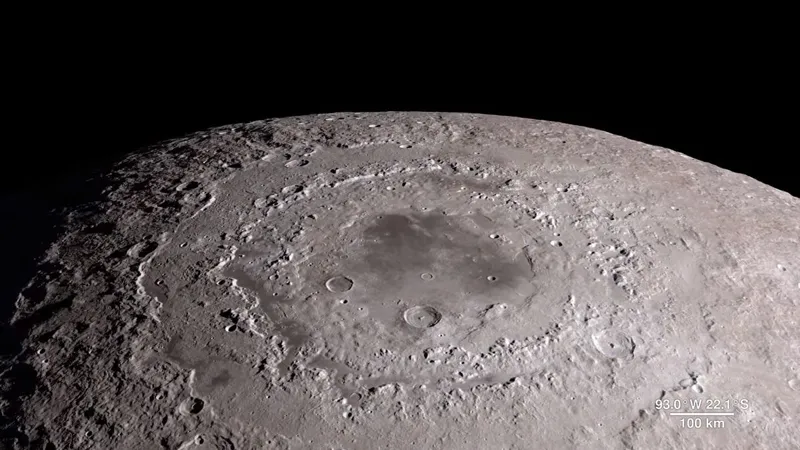On July 20, 1969, the world held its breath as NASA’s Apollo 11 mission made history by landing the first humans on the Moon. This monumental achievement was not just about stepping onto lunar soil; it was also a groundbreaking moment in broadcasting technology, as millions of viewers around the globe tuned in to witness the event live. The feat of transmitting video from the Moon, a staggering 250,000 miles away, posed extraordinary challenges, which were ingeniously met by NASA engineers and their partners. Join us as we explore the innovative camera technology and transmission methods that made this spectacular lunar broadcast possible, capturing the hearts and imaginations of a generation.
| Category | Details |
|---|---|
| Mission Name | Apollo 11 |
| Mission Dates | July 16 to July 24, 1969 |
| Camera Developer | Westinghouse Electric Company |
| Camera Type | Modified Slow-Scan Television (SSTV) |
| Camera Features | Designed to withstand extreme temperatures from -157°C to 121°C, energy efficient, and capable of functioning in minimal light. |
| Video Quality | Black-and-white, 320 lines resolution, 10 frames per second, appeared blurry and pixelated. |
| Transmission Distance | 250,000 miles to Earth |
| Challenges of Broadcasting | Signal loss, low power, and technical problems due to distance. |
| Transmission System | Unified S-band system combining video, voice, and data. |
| Receiving Stations | Three stations on Earth converted the signal for TV broadcasts. |
| Final Location of Camera | Left on the Moon after the mission |
| Historical Significance | First live broadcast from the Moon, allowing millions to experience the event in real-time. |
The Historic Apollo 11 Mission
The Apollo 11 mission, launched on July 16, 1969, was a monumental event in human history. For the first time, astronauts Neil Armstrong and Buzz Aldrin landed on the Moon, making a giant leap for mankind. This incredible journey lasted until July 24, 1969, and was watched by millions around the globe. Apollo 11 not only showcased the bravery of astronauts but also highlighted the technological advancements of NASA, proving that dreams of space exploration could become a reality.
This mission was more than just a trip to the Moon; it represented years of hard work and dedication by countless scientists and engineers. The Apollo program aimed to gather knowledge about the Moon and demonstrate America’s capabilities in space during a time of fierce competition with the Soviet Union. As Armstrong famously stated, ‘That’s one small step for man, one giant leap for mankind,’ the mission inspired generations to dream big and explore the universe.
Frequently Asked Questions
How did NASA broadcast live video from the Moon?
NASA used a specially designed slow-scan television camera and advanced technology to transmit live video back to Earth during the Apollo 11 mission.
What challenges did the camera face on the Moon?
The camera had to withstand extreme temperatures and operate without air, which required special design features to prevent overheating and function in bright and dark conditions.
How was the live video signal transmitted to Earth?
The video signal traveled 250,000 miles to Earth using a gold-plated antenna, and was sent through three receiving stations before reaching NASA’s Mission Control.
Why was the video quality from Apollo 11 poor?
The video was transmitted at a lower frame rate of 10 frames per second to conserve power, and had to be converted for TV, which degraded the image quality.
What happened to the camera after the Apollo 11 mission?
NASA left the Westinghouse camera on the Moon along with other equipment to reduce weight for the return trip, and it remains there today.
Did Apollo 11 use a Lunar Rover?
No, the Lunar Rover was not used during Apollo 11. It was first introduced in the Apollo 15 mission in 1971.
How did people around the world watch the Apollo 11 broadcast?
The raw video signals were converted to a compatible format for standard TV broadcasting, allowing networks worldwide to share the historic event with millions.
Summary
In 1969, NASA made history by broadcasting live video from the Moon during the Apollo 11 mission, which lasted from July 16 to July 24. A specially designed camera by Westinghouse Electric Company was created to endure the harsh lunar conditions and capture this monumental event. This slow-scan television camera transmitted images back to Earth despite challenges like extreme temperatures and distance. Although the video quality was low, it allowed millions to witness Neil Armstrong’s first steps on the lunar surface. Today, the camera remains on the Moon, symbolizing this incredible achievement in space exploration.
